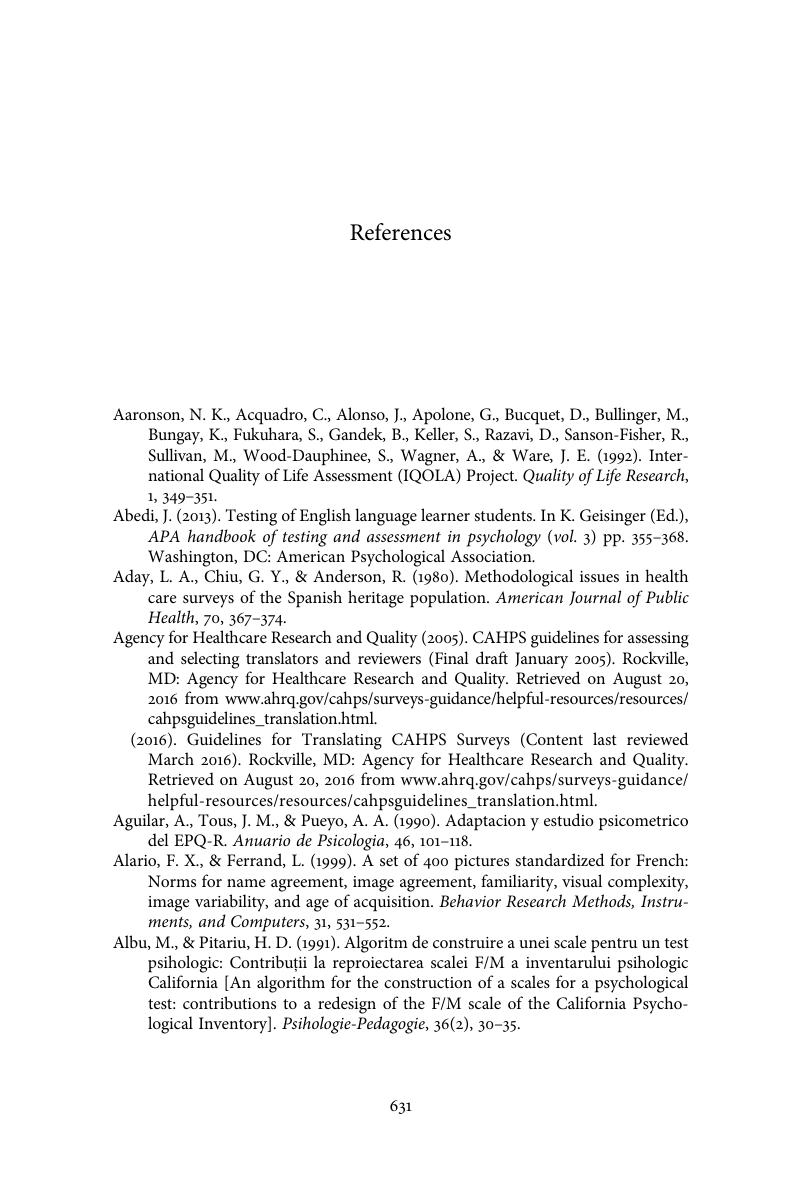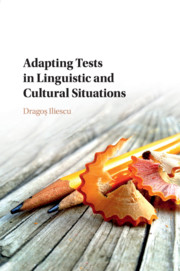Book contents
- Adapting Tests in Linguistic and Cultural Situations
- Educational and Psychological Testing in a Global Context
- Adapting Tests in Linguistic and Cultural Situations
- Copyright page
- Dedication
- Contents
- Figures
- Series Editor’s Foreword
- Acknowledgments
- Introduction
- Part I Preliminary Issues in Test Adaptations
- Part II Equivalence in Test Adaptations
- Part III Critical Phases in the Adaptation Process
- Checklists
- References
- Index
- References
References
Published online by Cambridge University Press: 23 October 2017
- Adapting Tests in Linguistic and Cultural Situations
- Educational and Psychological Testing in a Global Context
- Adapting Tests in Linguistic and Cultural Situations
- Copyright page
- Dedication
- Contents
- Figures
- Series Editor’s Foreword
- Acknowledgments
- Introduction
- Part I Preliminary Issues in Test Adaptations
- Part II Equivalence in Test Adaptations
- Part III Critical Phases in the Adaptation Process
- Checklists
- References
- Index
- References
Summary

- Type
- Chapter
- Information
- Adapting Tests in Linguistic and Cultural Situations , pp. 621 - 630Publisher: Cambridge University PressPrint publication year: 2017



